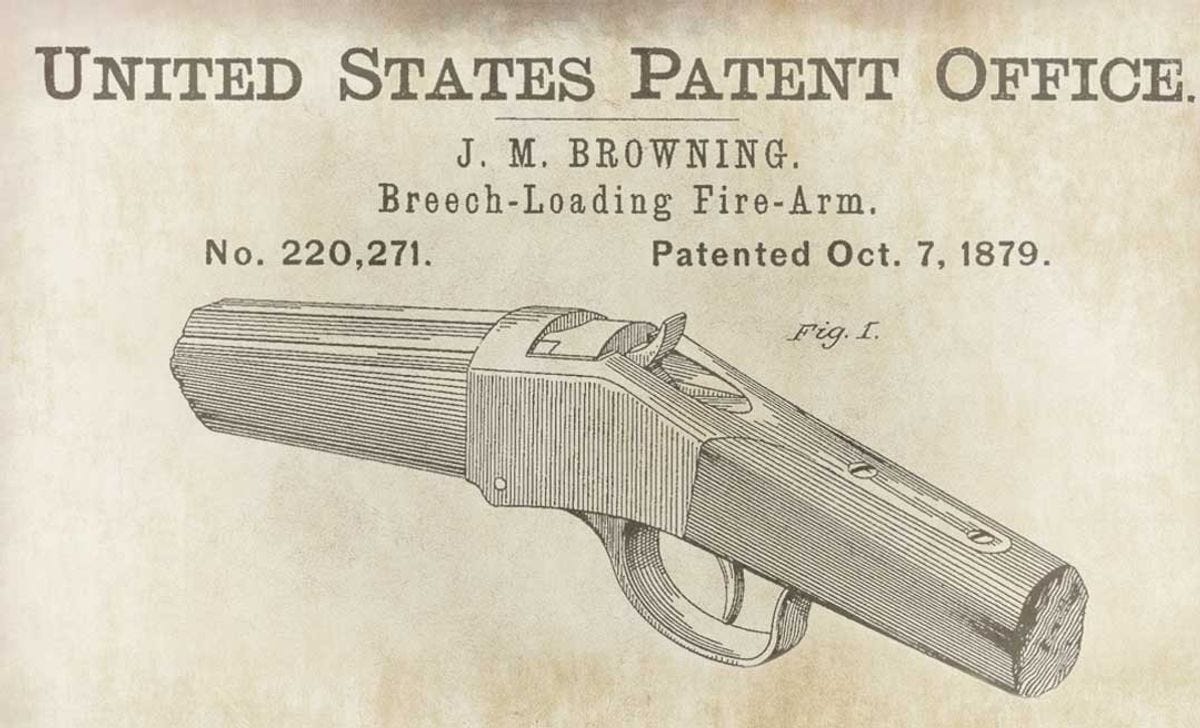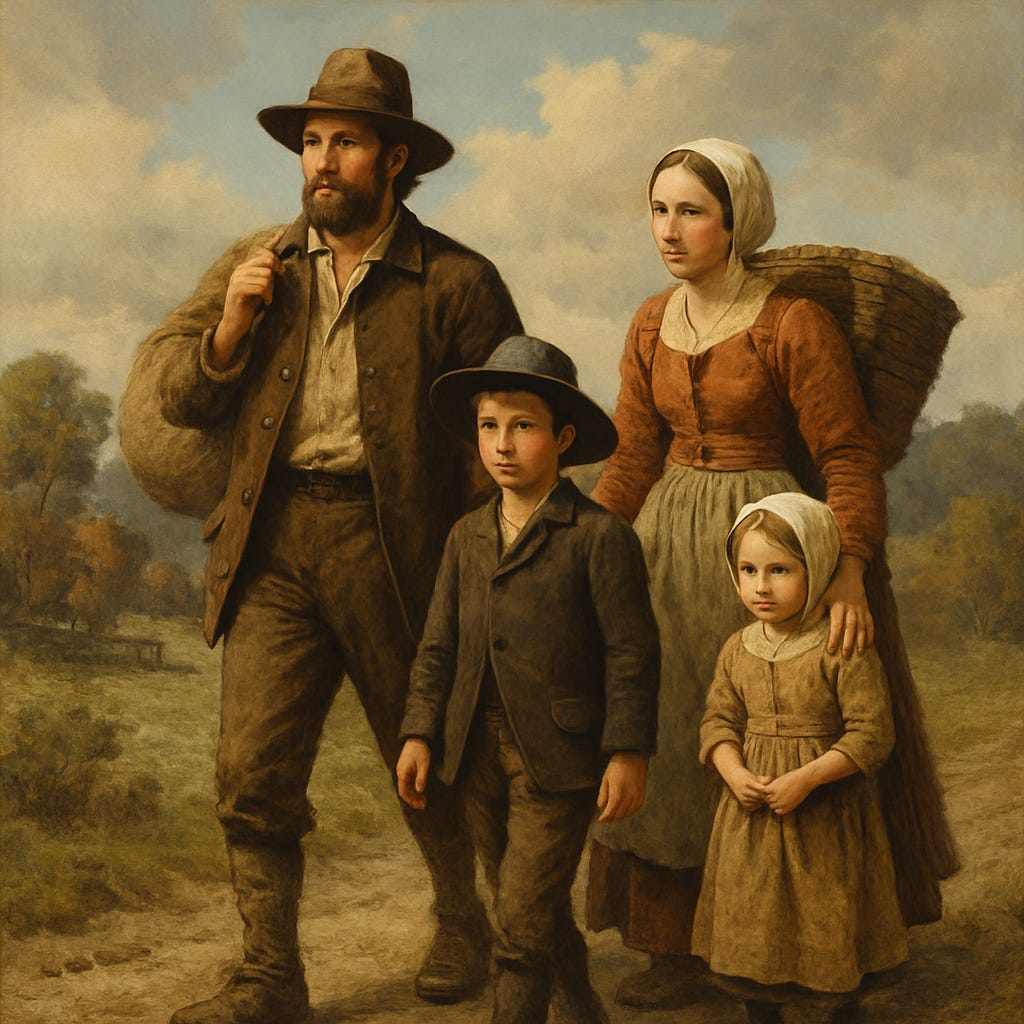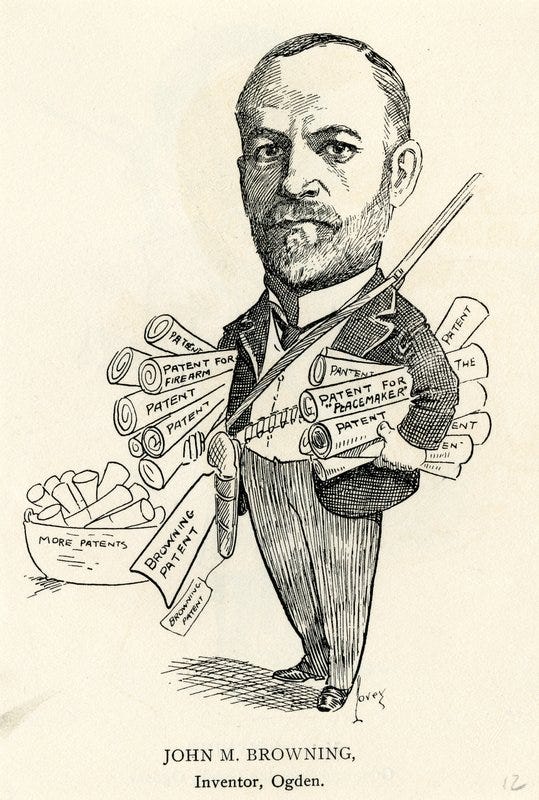John Moses Browning and the Gospel of Invention
Inside the life and legacy of America’s most visionary gunsmith.
Leonardo da Browning
In a small workshop in Utah, a boy used abandoned scraps to create a masterpiece. That boy, John Moses Browning, became one of the most influential firearms designers the world has ever known — a man whose genius earned him the title "the Father of Modern Firearms," the Leonardo da Vinci of gunmaking.
Over six decades, he filed 128 patents and developed at least 80 distinct designs, including some of the most iconic mechanical blueprints in weaponry. Pistols, rifles, shotguns, from single-shot rifles to repeaters, semi-automatics, and machine guns: he advanced the technology of war — a brutal but honest measure of human innovation.
But he crafted this unstoppable machinery from scraps — garbage. His magic lay in a demystification of magic.
A gun is metal and wood, bolts and screws and levers. On its own, this hardware could become any number of different objects. The life of a creation relies on the assembly of those spare parts.
Browning believed in the elegance of simplicity. To him, the greatest designs were the least complicated, embodying a principle he often voiced: “The best gun is the simplest gun.”
I won’t even pretend to understand the technical ingenuity and dense terminology of Browning’s inventions. I just admire his dedication to elementary principles.
He saw no virtue in excess or needless complexity. For Browning, the real challenge wasn’t just designing a mechanism that worked but arranging its essential components in precisely the right way — a balance of form and function that set his work apart.
As Elon Musk has proven, genius is more skeletal than cosmic, knowing which pieces fit together, like how The Beatles’ “Golden Slumbers” and “Carry That Weight” are twins that stand alone.
Deep Roots
The Browning family emigrated to Virginia in the 1620s, not long after the Pilgrims landed at Plymouth Rock. By the early 18th century, they had settled in Tennessee, where Jonathan Browning — father of John Moses Browning — was born.
Jonathan, the son of a farmer, discovered an early passion for blacksmithing. At 19, he traveled to Nashville, apprenticed with a gunsmith, and eventually started his own business and married his first wife (not due to divorce, but polygamy).
Before long he began his slow trek westward, relocating in 1833 to Illinois, where he established his own gunsmithing shop.
Jonathan met Joseph Smith, the Mormon prophet, and converted to the Church of Jesus Christ of Latter-day Saints. He inscribed his guns with the phrase, "Holiness to the Lord - Our Preservation," a reflection of his belief that faith and craft were intertwined. This sentiment was also an animating force in the work of his son John Moses.
Two years later, he moved his family and business to Nauvoo, Illinois—a town of both hope and danger for the Mormon community, its name derived from the Hebrew phrase meaning "a beautiful place.” For the LDS, this paradise devolved into a hellscape of martial law and persecution.
After Joseph Smith’s assassination by a heavily armed mob, most of his followers fled Nauvoo. (Legend has it, Smith died with a smoking gun in his hand.) At the church's urging, Jonathan stayed behind to ensure that the remaining Mormon settlers had access to self-defense.
Then, in 1852, with the blessing of church leaders, Jonathan moved his family to Ogden, Utah, a Mormon outpost near Salt Lake City, alongside Brigham Young.
There, Jonathan focused exclusively on gun repair and gave up his role as an inventor. He fathered 22 children, the last born shortly before his death at 74.
Forged to the Craft
John Moses Browning was born in Ogden, when the West was still wild. By the age of six, he was already helping his father in the workshop.
At ten, he built his first working firearm, a rudimentary rifle cobbled together from spare parts, which he used to hunt small animals for family dinner. At 13, he disassembled a broken shotgun, studied its mechanics, and reengineered it into a better version of itself.
In 1878, at just 23, John Moses designed his first firearm, a single-shot rifle that simplified the percussion mechanism, making it more efficient and reliable.
He struck gold on his first swing. And the following year, he filed his first patent, what would become the J.M. Browning Single-Shot Rifle. His father Jonathan Browning passed away that same year, leaving the workshop to John Moses and his brothers.
They expanded the shop into Browning Brothers Co., a modest but respected business that quickly earned a reputation for quality.
Keep reading with a 7-day free trial
Subscribe to FREEDRIFT to keep reading this post and get 7 days of free access to the full post archives.














